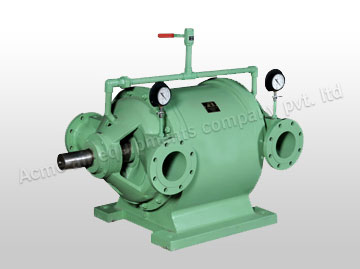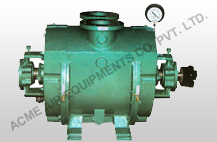A liquid ring vacuum pump is an extremely versatile device that is as old as the vacuum itself. Invented in 1908, this innovative vacuum pump allows liquids to be pumped into it via a series of tubes that run from its base to its end. The liquid then passes through an impeller that compresses and traps the liquid’s momentum before being released. This type of pump has many applications in the liquid-supply industry. However, the liquid ring pump has one of the most famous and well-known uses: filling bottles. And for good reason: it is one of the best ways to increase the volume of your liquid-filled bottles.

The liquid ring vacuum pump functions with two simple working principles. First, it utilizes a two-stage moving part that compresses and traps the gas inside the moving part. Second, it uses a liquid seal, a sort of wick, to stop the flow of the gas inside the moving part. To achieve these two important goals in the working principle of vacuum pump, the pump has a series of flexible tubes that connect the two parts together.
The first stage of the liquid ring vacuum pump works like this: It starts at the lowest compression stage, where it compresses the stored air. Then, it moves to the second compression stage. Here, the stored gas is compressed again, so that the volume of the discharged gas (the collected droplets) increases. Finally, it moves to the final compression stage, where it discharges the gathered droplets into a discharge tubing. This entire process is completed extremely quickly, sometimes within just a fraction of a second.

The second principle behind the pump is the use of a fluid seal. There are basically two types of liquid seals in use in this type of vacuum pumps: The rotary seal, which are a type used more commonly; and the screw seal, which only utilizes the rotary seal to prevent leakage. Basically, these two seal types work by preventing the liquid from leaking into a lower region, while allowing the liquid to exit at a higher pressure through a valve. Depending on the exact type of pump being used, there may not be a third seal included.
The third principle behind the operation of a liquid ring vacuum pump is the positioning of the impeller in relation to the spinning blades. In the case of the rotary seal type, the impeller is always located in the housing; but for the screw seal type, the impeller must be either placed above or below the blades. Thus, in order to maintain the proper positioning of the blades, it is important to regulate the rotation speed of the impeller.
There are many other factors involved in the operation of water ring vacuum pumps. These include the amount of circulating media, the size and shape of the impeller, and the design of the inlet and discharge ports and the other important liquid ring vacuum pump parts. However, it should be noted that although these three principles are important, they do not play an overwhelming role in the operation of the device. In essence, these principles are to be observed and implemented as guidelines only. As such, it would be best to consult with an expert before making any adjustments to the functioning of your machine.



